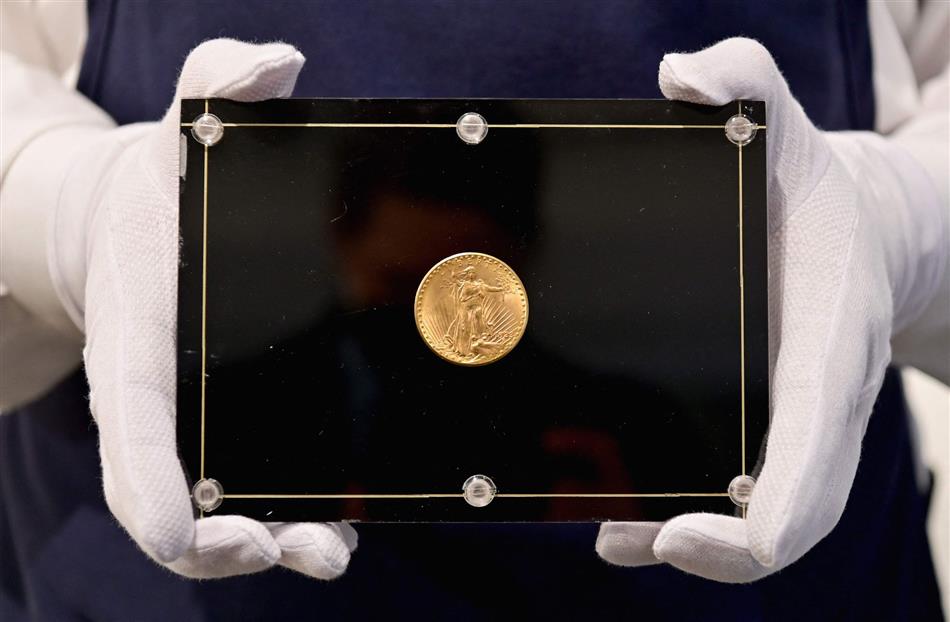An American gold coin called the Double Eagle and dated 1933 was auctioned on June 8 at Sotheby’s in New York for $18.87 million, or about 15.5 million euros, making it the most expensive in the world. In the same sale, what was considered the “most valuable character on the planet” did not exceed the minimum price that experts gave it.
The coin was billed at auction as the “Mona Lisa Coins” and took a few seconds to rise from a starting price of 7 million to 10 million dollars, from 5.75 to 8.2 million euros. Only after several “bids” appeared, the amount rose to 16.75 million dollars, about 13.7 million euros, put forward by a buyer who was on the phone and the deal was settled with him.
In terms of taxes and surcharges, the total price to be paid by the anonymous buyer of the 1933 Double Eagle will be $18.872,250 million, in particular the estimated price of about $10 and $15 million, about 8.2 to 12.3 million euros.
Thus, this coin nearly doubles the January 2013 value given to the Flowing Hair of 1794, which is considered the most expensive coin to date. At the time, just over $10 million was spent. However, when I tried again to auction it last October, it did not reach the minimum asking price, and therefore it was not sold.
The double eagle, made of brilliant gold, shows a woman personifying freedom on one side and a flying eagle on the other, designed by the American sculptor Augustus Saint-Gaudens and standing out as the only one of its kind to remain in private hands, and that indeed all others are owned by the United States Mint.
This model was never circulated, as it was withdrawn after its minting by President Franklin Roosevelt, who decided in 1933 that the United States would not back its coins with gold reserves, as a measure to control the economic depression that afflicted the country. After that, the United States never again minted gold coins, except for a limited series of collectors.
However, some copies appeared on the collectors’ market, before they were confiscated by the secret services of the United States. Except for the double eagle that was part of the coinage collection (Historical, Technical and Economic Study of Coins and Medals) of King Farouk of Egypt.
The gold coin was purchased in 1995 by a British collector, and after a five-year legal battle it was allowed to legally resell it to its current owner, American designer Stuart Weitzman, for $7.9 million, or about €6.49 million in 2002.
After this sale, the director of the US Mint gave Weitzman a monetization certificate, which converted the object into the official currency of the United States.
Besides the coin, two other important stamps were auctioned: three collectors’ holdings spent several years in the hands of Whitsman, who purchased them individually to fulfill one of his greatest wishes. “It was a childhood dream to have the best stamp in the world, the best currency in the world, and the best American stamp in the world,” explained Richard Austin, director of Sotheby’s Books and Manuscripts.
However, the sale of the label, dubbed “British Guiana,” disappointed. And specialists at the New York auction house estimated its value at between 10 and 15 million dollars, between 8.2 and 12.3 million euros, but the price of the hammer remained at 7 million dollars, 5.75 million euros. Of this stamp, issued in 1856, only one copy is known, it was rediscovered in 1873 by a 12-year-old boy in love with stamps, who found it within a series of sheets of paper, and abandoned it without knowing its rare and unique character.
The third object is a block of four copies of the most famous poster in the United States, Jenny Inverted, which was auctioned for four million dollars, about 3.3 million euros, or 4.8 million dollars with a total value, 3,9 million euros. These stamps were first purchased in 1918 and feature a Curtis JN-4 biplane, nicknamed Jenny, that was upside down due to a misprint.

“Infuriatingly humble analyst. Bacon maven. Proud food specialist. Certified reader. Avid writer. Zombie advocate. Incurable problem solver.”

